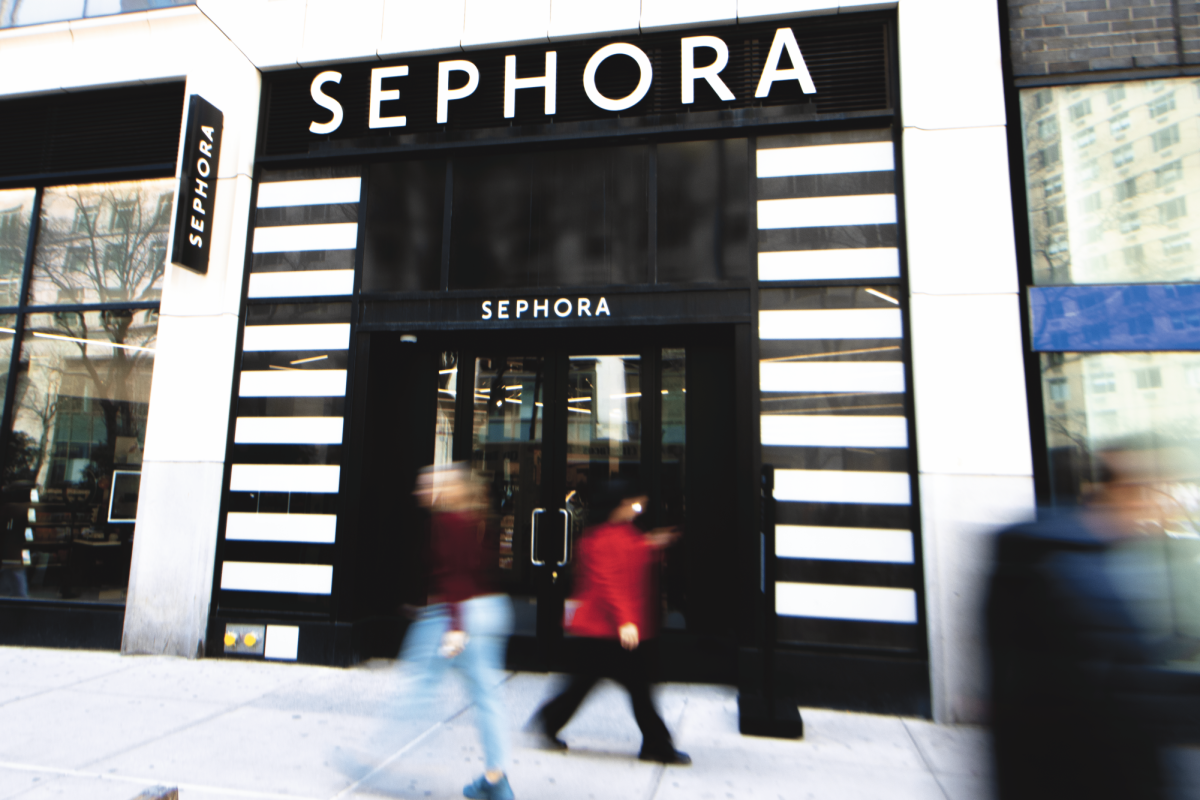The term “recession indicator” has surged in popularity online, but it’s not just another internet buzzword thrown around without meaning. Recession indicators are diagnosed by observing shifts in trends compared to past behaviors and spending habits. But they have far more to do with the public affect the economy causes than with economic shifts themselves.
Since the threat of a recession creates widespread despondency, resulting indicators reflect the two ends of a reactionary spectrum: embracing the somber mood through conservative trends, or chasing ebullience through temporary joys.
Vincenzo Domecq, Fordham College at Lincoln Center (FCLC) ’28, shared a sentiment many have expressed online: absolutely everything seems like a recession indicator when “prices for everything are going up — especially what our government’s putting tariffs on.”
The term is somewhat satirized on the internet, with many users sarcastically referring to every post they see as recession indicators in response to the phrase’s rapid increase in frequency.
Kennedy Riggins, FCLC ’28, said she often sees the term pop up on her feed.
“There’s different things that go on that basically show that a recession is coming … like, people are buying more lip glosses, and that is an indicator. Stupid stuff like that,” Riggins said. The term is somewhat satirized on the internet, with many users sarcastically referring to every post they see as recession indicators in response to the phrase’s rapid increase in frequency. As people have gained motivation to learn about the economy in the wake of online fame, our cultural ability to expand the definition and understanding of a term has been put on display.
Domecq and Riggins are not wrong to agree with these social media users. Everything — down to the “stupid stuff” — can indicate a recession because of its recently overwhelming imminence. James Ng, a senior financial advisor with Wells Fargo, said that “nothing is doing well” following Trump administration-sanctioned tariffs.
These economic realities can be observed in popular fashion choices. Some choose to take a modest route. One recession prediction theory is the “hemline index,” coined by economist George Taylor in 1926. It refers to the notion that the more severe an economic downturn, the longer the hemline of skirts and pants will be Although the correlation may not be so accurate, the innate desire to cover up — as in the case of baggy clothing — for added comfort is a psychologically-backed phenomenon — a subconscious complement to a melancholy mood — according to InStyle.
“People are more conservative nowadays. There’s a really big trend of long skirts,” Riggins said.
Eloise Lebee, a wardrobe supervisor with West Street Productions, said that she’s seen similar shifts as wardrobe demands have changed.
“As soon as a recession hits, or inflation, or anything like that, there’s a lot more callback to things that are comfortable or things that are practical,” Lebee said.
For some, however, this period of experimentation serves as a time of discovery and deepened values.
But not all Americans express their recession-induced anxieties by the same means.
A longing to return to a more enjoyable time allows nostalgia to acutely permeate the culture, an approach that contrasts a somber or strictly pragmatic style. Pop music is an oft-cited recession indicator — a sign that a demand for “fun” is dire, firmly attributed to 2007-2009 recession-era artists like Kesha, T-Pain, Lady Gaga or Skrillex, all of whom are regaining popularity.
Marc Yeh, FCLC ’28, notices that people seem to be drawn to more music festivals and concerts. The bright, flamboyant visual styles of the 1980s through the 2000s are returning alongside this zeal for excitement since they act as temporary havens against harsh realities. In beauty, changes as minute as the middle part by the supposedly subversive side part are being cited as recession indicators.
“Everyone’s becoming more comfortable, kind of expressing themselves how they want to express themselves … a surge in creativity … you know, being yourself and showing that physically,” Caron said.
Lebee further discussed how a rapid turnover of fashion interests comes with this “surge of creativity,” as people try on different forms of individuality. People gravitate toward microtrends that they do not personally resonate with, instead experimenting with “something that is more fleeting and momentary.”
For some, however, this period of experimentation serves as a time of discovery and deepened values. As recession fashion grows in topicality, the political messaging that clothing sends — whether intentional or not — is entering the public sphere.
For instance, Lebee called attention to a notable shift from subdued, drab hues to bright, in-your-face colors in the mid-2010s, a change attributed both chronologically and politically to the 2016 presidential election, when women’s finances were particularly vulnerable. At the time, President Donald Trump threatened the Fair Pay order that protected equal pay for all genders — a violation of individual rights that served as the impetus for more brash individuality. Lebee said the departure from “seft” pastels coincided with a departure from “feminine” gender roles in response to threats against women’s rights.
Hampton Ramos, FCLC ’28, enumerated some other shifts toward eye-catching styles: “low rise, big sunglasses, all of that stuff … bows on everything.” She continued, “people used to dress more casual, now I feel like I’ve seen a lot more people dressing up every day.”
The “fleeting and momentary” phenomenon that Lebee highlighted extends far beyond fashion. Much like the lip gloss trend Riggins mentioned, a Raymond James article defines the “lipstick index” as the purchasing of affordable, novelty items as a means of sparking joy — akin to the “trinket-collecting” trend that has gained traction for similar reasons.
According to USA Today and the National Library of Medicine, spending on drugs and alcohol, sometimes referred to as “vice spending,” is a thriving attempt to meet incessant demands for a pick-me-up during a recession. These impulse decisions feel gratifying in the moment, but of course, are ultimately detrimental.
Although they may seem trivial, staying aware of these evolutions in fashion and culture can help us maintain an awareness of the equally rapidly changing economy and political landscape. A recession is undoubtedly daunting, but there are more productive ways to deal with it than others. Panic-buying and substance abuse are dangerous outlets for economic anxieties that could be somewhat remedied by trying out a new look instead.



